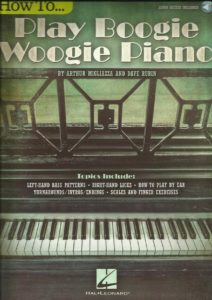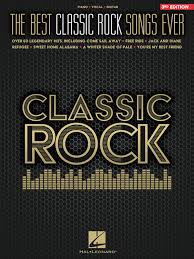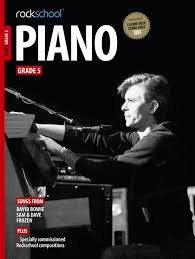Come join us now, and enjoy playing your beloved music and browse through great scores of every level and styles!
Can’t find the songbook you’re looking for? Please, email us at: sheetmusiclibrarypdf@gmail.com We’d like to help you!
Table of Contents
Remembering Jerry Lee Lewis, born on this day in 1935 (1935-2022)

Great Balls Of Fire · Jerry Lee Lewis
Best Sheet Music download from our Library.

Please, subscribe to our Library.
If you are already a subscriber, please, check our NEW SCORES’ page every month for new sheet music. THANK YOU!

Jerry Lee Lewis: The Godfire of Rock and Roll
To speak of Jerry Lee Lewis is to speak of a primal force in American music, a hurricane of talent, ego, and Pentecostal fire that forever altered the landscape of rock and roll. He was not merely a performer; he was an event, a spectacle of sonic and physical rebellion. Nicknamed “The Killer,” Lewis embodied a dangerous, untamable energy that stood in stark contrast to the more polished, accessible sounds of his contemporaries. His life was a sprawling, chaotic epic of unparalleled highs and devastating lows, a narrative as wild and unpredictable as his piano-pounding performances. This article delves deep into the man, the music, and the myth, exploring the biography, style, techniques, and enduring legacy of Jerry Lee Lewis.
Biography: From Ferriday to Immortality
Jerry Lee Lewis was born on September 29, 1935, in Ferriday, Louisiana, into a world steeped in the twin pillars of Southern culture: profound sin and profound salvation. His family was poor but proud, and the pentecostal Assembly of God church provided the soundtrack to his youth. It was here that he first encountered the raw, emotional power of music through gospel hymns and the fiery oratory of preachers. He was a musical prodigy, initially trying the guitar before finding his true vessel at the age of eight: the piano.
A pivotal moment came when his father, Elmo, mortgaged the family farm to buy Jerry Lee a Starck upright piano. He absorbed everything—the sanctified rhythms of the church, the boogie-woogie of Meade Lux Lewis, the country of Jimmie Rodgers, and the hillbilly blues of Hank Williams. A cousin, Jimmy Swaggart (who would later become a famous televangelist), and a friend, Mickey Gilley (who would become a country star), were early musical rivals and companions.
In 1956, driven by an unshakable belief in his own talent, the 21-year-old Lewis drove to Memphis and audaciously walked into Sun Records, the home of Elvis Presley, Johnny Cash, and Carl Perkins. His audition for producer Sam Phillips was legendary. He first played a slow, country ballad, which Phillips dismissed. Frustrated, Lewis launched into a furious, sped-up version of Ray Price’s “Crazy Arms,” transforming the country waltz into a roaring boogie. Phillips heard the lightning in a bottle he was looking for and signed him immediately.

The years 1957-1958 represent one of the most explosive and creatively fertile periods in popular music history. Lewis released a string of seminal hits that defined rock and roll:
- “Whole Lotta Shakin’ Goin’ On”: A song that was not his, but he made it his own. Its release in 1957 catapulted him to stardom. His performance of it on The Steve Allen Show—where he kicked the piano stool away, played with his feet, and whipped his hair into a frenzy—is the stuff of legend, terrifying and electrifying a nation.
- “Great Balls of Fire”: An even bigger hit later in 1957, its title taken from biblical imagery he knew well. It was faster, more playful, and more suggestive, becoming an instant rock and roll anthem.
- “Breathless”: In 1958, this track continued the streak, a relentless, breathless (as the title implies) boogie that showcased his ferocious piano technique.
However, in May 1958, at the height of his fame, his career imploded. During a tour in England, the British press discovered that his new bride, Myra Gale Brown, was his 13-year-old first cousin once removed. The scandal was catastrophic. Tour dates were canceled, he was blacklisted from radio, and his record sales plummeted in an instant. The rock and roll rocket ship had been shot down.
What followed was a long, hard, and often bitter journey back. Lewis returned to his roots, rebuilding his career from the ground up as a country artist. The 1960s and 70s saw him score a remarkable string of country hits, including “What’s Made Milwaukee Famous (Has Made a Loser Out of Me),” “She Still Comes Around (To Love What’s Left of Me),” and “Another Place, Another Time.” He became a staple of the Grand Ole Opry, though his performances were often just as volatile as his rock and roll days.
His personal life remained tumultuous, marred by drug and alcohol abuse, financial troubles due to the IRS, and tragedy, including the deaths of two of his sons and multiple divorces. He was a living contradiction: a gospel-singing sinner, a country gentleman with a rock and roll heart. Despite the chaos, his talent never dimmed. He continued to perform well into his old age, his status as a legend solidifying with inductions into the Rock and Roll Hall of Fame (1986) and the Grammy Lifetime Achievement Award (2005).
Jerry Lee Lewis outlived all of his Sun Records contemporaries, a testament to his stubborn, indomitable spirit. He died on October 28, 2022, at the age of 87, the last of the rock and roll pioneers.
Music Style and Improvisational Licks: The Killer’s Technique
Jerry Lee Lewis did not just play the piano; he attacked it. His style was a revolutionary synthesis of diverse American forms, creating something entirely new and visceral.
The Fusion of Styles:
At its core, Lewis’s music was a volatile cocktail:
- Pentecostal Fire: The rhythmic intensity, the call-and-response, and the sheer emotional fervor of his church upbringing were the bedrock of his style. Songs like “Whole Lotta Shakin’” are structured like a revival meeting, building to a fever-pitch climax.
- Boogie-Woogie Foundation: The driving, eight-to-the-bar left-hand pattern of boogie-woogie was his engine room. He learned it from records by players like Meade Lux Lewis and Albert Ammons, but he played it with more aggression and speed.
- Country Storytelling: His vocal delivery, particularly in his ballads, was pure country, dripping with heartbreak and honky-tonk weariness.
- Rhythm and Blues Swagger: The subject matter and attitude of his early hits were borrowed from the R&B he heard on the radio, filtered through his white, Southern sensibility.
Improvisational Licks and Piano Technique:
Lewis was not a complex jazz harmonicist; his genius lay in rhythmic invention and raw, physical power. His improvisations were bursts of energy that embellished the simple structures of his songs.
- The Glissando: His most famous trademark. Lewis would rake the keys with the fingers of his right hand, from the high notes down to the low, creating a wild, cascading sound. This wasn’t a delicate slide; it was a percussive, violent sweep that served as an exclamation point.
- The Trilling Tremolo: He would rapidly alternate between two adjacent notes with his right hand, creating a shaking, rumbling effect that heightened the tension, perfectly mimicking the “shakin’” in his biggest hit.
- Clustered Chords and Punishing Octaves: Instead of delicate arpeggios, Lewis would pound out full, clustered chords with his right hand, or hammer on octaves to create a bigger, more percussive sound. His left hand was a relentless metronome of boogie-woogie bass lines, but he would often break from the pattern to punch the keyboard with his fist or elbow for dramatic emphasis.
- Vocal-Piano Call and Response: He would often play a lick on the piano and then answer it with a vocal phrase, or vice-versa, a direct import from the Pentecostal church. This created a dynamic, conversational feel in his music.
His improvisations were less about exploring new harmonic territory and more about intensifying the emotional and physical impact of the song. Every element—the pounding piano, the snarling vocals, the wild hair and flying feet—was in service of a single goal: complete and total musical combustion.
Cooperation with Other Artists: The Million Dollar Quartet and Beyond
Lewis’s interactions with other artists were often defined by his fierce competitiveness and his belief that he was the greatest rock and roll performer alive.
The Million Dollar Quartet: The most famous collaboration-that-wasn’t-really-a-collaboration occurred on December 4, 1956, at Sun Studios. An impromptu jam session unfolded between Jerry Lee Lewis (then a new Sun artist), Carl Perkins, Johnny Cash, and a visiting Elvis Presley. Sam Phillips had the foresight to roll the tape, capturing a magical moment in music history. The recording showcases a young, cocky Lewis holding his own among the established stars, trading gospel and country songs. It is a priceless document of four giants at the dawn of their fame, with Lewis often trying to steer the music toward a faster, more frenetic pace.
Other Collaborations: Throughout his career, Lewis recorded with a variety of artists, though he was never a man to share the spotlight easily.
- The MG’s: He recorded the classic album “The Session” in the 1970s with notable studio musicians, including members of Booker T. & the M.G.’s, resulting in powerful versions of rock and country standards.
- Duets Albums: In later years, he participated in duets albums, recording with artists like Jimmy Page, Rod Stewart, Bruce Springsteen, and Kid Rock for the 2006 album “Last Man Standing,” and later for “Mean Old Man” (2010). These projects often highlighted the immense respect he commanded from generations of musicians, even if the chemistry was sometimes more respectful than revolutionary.
His most significant “cooperation” was perhaps his lifelong, friendly rivalry with Elvis Presley. Lewis famously believed that while Elvis was the King of Rock and Roll, he (Jerry Lee) was its one and only God.
Chord Progressions and Music Harmony: Deceptive Simplicity
Harmonically, Jerry Lee Lewis’s music was built on the bedrock of blues and country. He was not an innovator of complex chord changes; his genius was in how he rhythmically animated simple progressions.
The vast majority of his classic Sun recordings are based on the 12-bar blues and its close relatives. “Whole Lotta Shakin’ Goin’ On,” for instance, is a modified 12-bar blues. “Great Balls of Fire” uses an even simpler structure, essentially a repeating pattern of I, IV, and V chords in the key of C (C, F, and G).
The magic was in the execution:
- Rhythmic Displacement: He would play with the timing, anticipating beats or laying back just behind them, creating a propulsive, swinging feel even over a simple boogie pattern.
- Dynamic Control: He understood the power of silence and build-up. He would often drop out to just the vocals and a minimal piano part before exploding back into the full boogie-woogie assault, a technique learned from gospel.
- Vocal Harmony: His harmony was often raw and untrained. He would frequently harmonize with himself on records, creating a wild, slightly off-kilter sound that added to the chaotic energy. The backing vocals on tracks like “Great Balls of Fire” are more like enthusiastic shouts than polished harmonies.
In his country period, he adopted more standard country progressions, like the melancholic I-vi-IV-V pattern, but he always infused them with a rock and roll urgency. The piano was never just an accompaniment; it was a lead rhythm instrument, driving the band with an almost violent authority.
Influences and Legacy: The Tree of Rock and Roll

Influences:
Lewis’s musical DNA was a direct line from:
- Al Jolson: For theatricality and audience connection.
- Jimmie Rodgers: The “Singing Brakeman” for his yodel and country-blues fusion.
- Hank Williams: For the soulful, lonesome vocal delivery.
- Meade Lux Lewis & Albert Ammons: For boogie-woogie piano technique.
- The Pentecostal Church: For the raw, unbridled emotional power and performance style.
Legacy:
Jerry Lee Lewis’s legacy is immeasurable. He is one of the foundational pillars of rock and roll.
- The Archetypal Rock Star: He defined the image of the rock musician as a dangerous, rebellious, and sexually charged figure. Mick Jagger, Elton John, John Lennon, and countless others saw in him a blueprint for stage presence.
- Piano Rock: Before Lewis, the guitar was becoming the dominant rock instrument. He single-handedly made the piano a weapon of rock and roll, paving the way for Little Richard, Fats Domino, Elton John, and Billy Joel.
- Punk Attitude: His sneering vocals, his rejection of polite society, and his raw, unpolished sound made him the original punk rocker decades before the term existed.
- The Uncompromising Artist: He never apologized for who he was or the music he made. His career, with all its self-inflicted wounds, stands as a testament to the price and power of absolute artistic authenticity.
Works, Filmography, and Discography
Most Known Compositions and Performances:
While he was a master interpreter, his most famous performances are of songs he did not write.
- “Whole Lotta Shakin’ Goin’ On” (1957)
- “Great Balls of Fire” (1957)
- “Breathless” (1958)
- “High School Confidential” (1958) – Also featured in the film of the same name.
- “What’s Made Milwaukee Famous (Has Made a Loser Out of Me)” (1968)
- “She Still Comes Around (To Love What’s Left of Me)” (1968)
- “Another Place, Another Time” (1968)
- “Chantilly Lace” (1972) – A live recording that became a hit.
- “Over the Rainbow” – His country-ballad version showcases his surprisingly tender and expressive vocal abilities.
Filmography:
Lewis’s film career was brief but memorable.
- “Jamboree” (1957) – Appeared as himself performing “Great Balls of Fire.”
- “High School Confidential!” (1958) – Performed the title track from the back of a flatbed truck in the film’s opening sequence, an iconic rock and roll moment.
- Biographical Films: His life has been the subject of several films, most notably “Great Balls of Fire!” (1989), starring Dennis Quaid. While entertaining, the film was criticized for glossing over the darker aspects of his life.
Selective Discography:
- “Jerry Lee Lewis” (1958) – His debut album for Sun.
- “Jerry Lee’s Greatest!” (1961) – A compilation of early Sun hits.
- “The Return of Rock” (1965) – For Smash Records.
- “Live at the Star Club, Hamburg” (1964) – Often cited as one of the greatest live rock and roll albums ever recorded, capturing him at his most ferocious.
- “She Still Comes Around” (1969) – A key country album for Smash.
- “The Session” (1973) – Recorded in London with famous session players.
- “Last Man Standing” (2006) – A late-career triumph featuring numerous duets.
- “Mean Old Man” (2010) – Another successful duets album.
- “Rock & Roll Time” (2014)
Jerry Lee Lewis was more than a musician; he was a fundamental element of 20th-century culture. He was a walking contradiction: a sinner haunted by salvation, a country boy who created city music, a man who destroyed his own career only to rebuild it again. His music was a pure, unvarnished expression of id—of joy, lust, despair, and rebellion. To hear Jerry Lee Lewis was to feel the very essence of rock and roll, a spirit that remains, like The Killer himself, truly untamable.
Browse in the Library:
Or browse in the categories menus & download the Library Catalog PDF:
